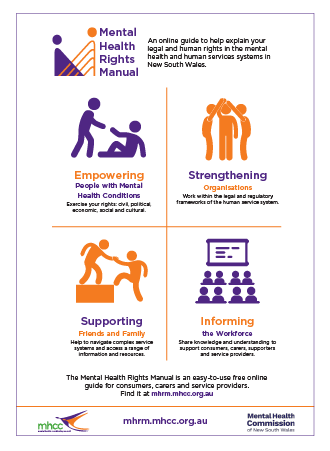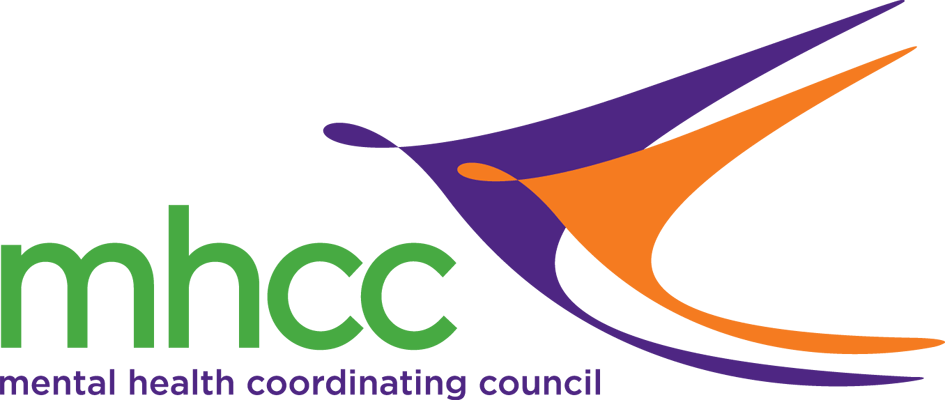
A disproportionate number of LGBTIQ+ people experience worse health outcomes than their non-LGBTIQ peers in a range of areas, including particularly in relation to mental health and suicidality. Especially poor outcomes are found in all age groups and they report much higher rates of depression and anxiety, high and very high levels of psychological distress as well as suicidal ideation and suicide attempts. LGBTIQ people often experience more discrimination and abuse than is generally experienced by the broader population in Australia, lived and living experience of trauma is extremely prevalent in LGBTIQ+ communities.
The elevated risk of mental ill-health and suicidality among LGBTIQ people is not due to sexuality, sex or gender identity in and of itself but rather due to discrimination and exclusion people experience as key determinants across all areas of physical and mental health.
Homophobia and transphobia describe the fear of and/or prejudice against people who are perceived to be homosexual or trans respectively, or more generally to not conform to mainstreamIn the context of the mental health and the NDIS, mainstream services and programs are non-NDIS, government funded and/or delivered services that can be used by everyone. They include public health and mental health services, public transport, education, housing, justice, child protection and employment services. More male or female gender norms. They are often expressed as stereotyping, ostracising, discrimination, harassment, and violence. Exposure to and fear of discrimination and isolation can directly impact on people’s mental health, causing stress, psychological distress and suicidality.
The definition of terms and the way they are used changes over time, and can vary depending on location and culture. While acknowledging this, the terms used in this manual are defined* below.
LGBTIQ traditionally stands for lesbian, gay, bisexual, transgender, intersex, and queer or questioning. In some information and resource documents the + symbol is used to expand this definition to include the full range of sexual and romantic attractions (e.g. asexual, polysexual, pansexual), and all gender identities.
Gender identity describes someone’s own understanding of who they are with regards to their gender-related identity (e.g. woman, genderqueer, man, no gender, etc.), as distinct from their physical characteristics. This includes the way people express or present their gender and recognises that a person may not identify as either a woman or a man.
Sexuality describes a person’s emotional, romantic, or sexual attractions towards others, often describing the gender of people with whom someone builds sexual or romantic relationships, e.g. lesbian, gay, etc. Some people experience sexuality as fluid and changing across the lifespan, therefore we choose not to use the term ‘orientation’.
Intersex variation is an umbrella term for people with physical characteristics that are seen as different from what is typically thought of as ‘female’ and ‘male’ bodies. These physical characteristics are present at birth and may become more noticeable during physical development. Intersex variation is distinct from sexuality and gender identity. Therefore, intersex people may identify as male, female or another gender, and gay, lesbian, bisexual, heterosexual, etc.
*These definitions are based on MindOut and the National Centre for Transgender Equality terms.
Some tips about pronouns if you are a mental health worker are that: some people choose not to use gendered pronouns to refer to themselves, as they may identify themselves as having a gender other than male or female; having more than one gender identity; or having no gender at all. If the person you are assisting is not familiar to you and you are unsure of the person’s gender identity, you should:
Sexuality and gender lie on a spectrum, rather than falling within rigid categories, so not everybody identifies as male or female. Sexuality and gender may also change over time. There is great diversity among people using any particular label, and an LGBTIQ+ person may hold a range of identities, such as queer and transgender.
If you are a worker, do not make assumptions about a person’s sexuality or gender identity based on the way they look, act, talk, dress, or who their friends are, or whether they have children.
LGBTIQ people often experience stigma and discrimination. Even people who have grown up with supportive family and friends will most likely have experienced some degree of discrimination or prejudice. If you are a LGBTIQ person experiencing mental health difficulties because of bullying, harassment or discrimination related to your LGBTIQ experience, you should know that you can:
As a member of the LGBTIQ community, you are entitled to the same rights as anyone else in the community and to not be discriminated against because of your mental health conditionThe term mental health condition is a broad term that refers to symptoms that may be caused by life events, genetic factors or birth defects. This condition can be temporary, episodic or lifelong. A mental health condition can include mood, anxiety, personality, psychotic and compulsive disorders. It includes, but is not limited to, those conditions and symptoms recognised as constituting mental illness under the Mental Health Act 2007 (NSW). More.
You have the right not to be discriminated against because of any personal characteristic, including your:
You can also read about Good Practice and how to help promote diversity and prevent discrimination in the workplace. Download documents individually or as a set.
You can read more about the Anti-Discrimination Board NSW by clicking here.
In this other section of the Manual, you can read about:
If you think you have been discriminated against because of disabilityDisability is defined in the Disability Discrimination Act 1992 (Cth) as total or partial loss of the person’s bodily or mental functions; total or partial loss of a part of the body; the presence in the body of organisms causing disease or illness, capable of causing disease or illness; the malfunction, malformation or disfigurement of a part of the person’s body; a disorder or malfunction that results in the person learning differently from a person without the disorder or malfunction; a disorder, illness or disease that affects a person’s thought processes, perception of reality, emotions or judgment or that results in disturbed behaviour. More (including mental illness), you should get legal advice. You can get free legal advice about discrimination law from:
In NSW ACON is an organisation that has been designed by and for the LGBTIQ communities to promote community health, inclusion and HIV responses for people of diverse sexualities and genders. They provide services and programs locally, state-wide and nationally.
One in three LGBTIQ people experience violence from a partner, ex-partner or family member. This means that LGBTIQ people are just as likely as people in the general population to experience Domestic and Family Violence (DFV). However, research shows that LGBTIQ people are less likely to find support services that meet their specific needs. Abuse in LGBTIQ relationships has the same elements as all abusive relationships, but there are some unique differences for LGBTI people:
ACON supports LGBTQ people who have experienced prejudice related violence and harassment by providing a range of support services and resources, including providing family violence support to LGBTIQ people experiencing family violence, which can include safety planning. LGBTIQ people may request different information to be provided to different services they access as part of feeling safer and to ensure services will treat them well or with respect. Some of the services ACON provides includes:
ACON also has a digital information and resource destination TransHub which is for all trans and gender diverse (TGD) people, loved ones, allies and health providers, and has more information on mental health and trans and gender diverse people.
The Gender Centre develops and provides services and activities, which enhance the ability of people with gender issues to make informed choices. They offer a wide range of services to people with gender issues, their partners, family members and friends in NSW. They also provide an accommodation service and act as an education, support, training and referral resource centre to other organisations and service providers.
QLife provides Australia-wide anonymous, LGBTIQ peer support and referrals for people wanting to talk about a range of issues including sexuality, identity, gender, bodies, feelings or relationships. Services are free and include both telephone and webchat support, delivered by trained LGBTIQ community members across the country. Services are for LGBTIQ individuals, their friends and families, and health professionals in Australia. Beyond the telephone, QLife offers webchat for people who prefer online interactions or for whom the phone is impractical or unsafe.
Twenty10 Gay and Lesbian Counselling Service NSW provide a range of specialised services for LGBTIQ young people (12-25 years old), including social support and youth housing.
ReachOut.com is an online mental health service for young people and their parents in Australia. It includes self-help information, a peer-support program and referral tools to helping young people be well and stay well. The information offered to parents makes it easier for them to support their teenagers. ReachOut is a free service that’s available anytime and pretty much anywhere.
To read more about a range of LGBTIQ Services across NSW click here.
There are also some national organisations that can assist LGBTIQ people in a number of ways. To read more go to page 7 and 8 of the following Beyond Blue Factsheet.
Updated January 21, 2021

